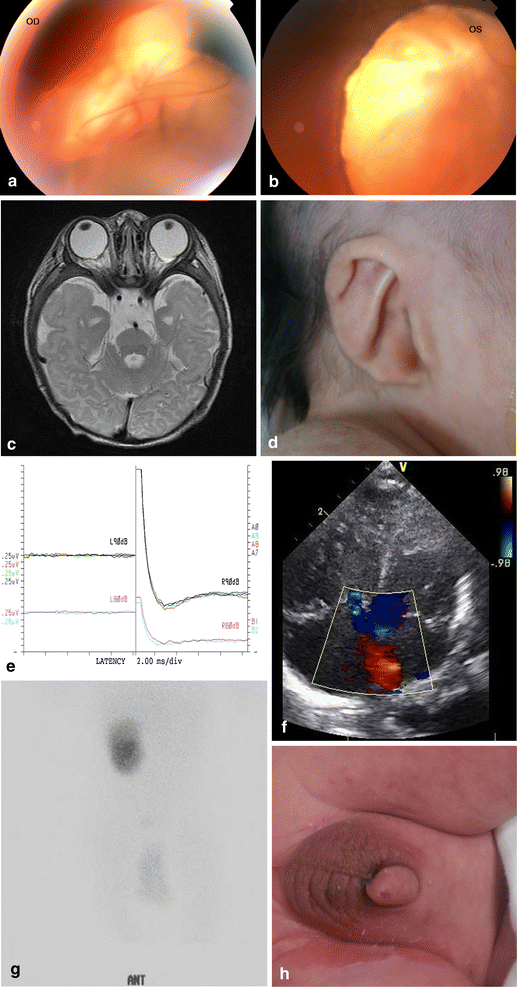
In all cases, it is confirmed with ECG measurements. Other times, children collapse spontaneously while playing. Long QT syndrome sometimes presents itself as a complication due to surgery to correct syndactyly. Syndactyly and other deformities are typically observed and diagnosed at birth.

Diagnosis Syndactyly in a 2 + 1 / 2-year old girl with Timothy syndrome Because exon 8 has greater expression in the heart versus exon 8a, patients with Timothy syndrome type 2 have worsened cardiac defects compared to those with the classical form. This leads to long QT syndrome and resultant arrhythmia. The lack of proper voltage-dependent inactivation in these mutants causes prolonged inward current and depolarization during cardiac action potentials. The effect of the G406R mutations on channel function is identical in the two forms of Timothy syndrome. A second mutation resulting in G402S, located a few amino acids upstream, was originally also given the name of type 2, but it is now recognized as a variant that causes non-syndromic LQT8. Timothy syndrome type 2 mutations are similar, being the identical G406R mutation in the other splice form. The conserved glycine at this position seems to be vital for proper voltage-dependent inactivation, as the mutant is lacking in this respect. One mutation is found in patients with classical Timothy syndrome, G406R, located just past the sixth membrane-spanning segment of domain 1 (D1S6). Exon 8 is also expressed in these regions and its level is roughly five-fold higher than exon 8a expression. Exon 8a is highly expressed in the heart, brain, gastrointestinal system, lungs, immune system, and smooth muscle. Exons 8 and 8A are mutually exclusive exons. These mutations are in exon 8 (type 2) and exon 8a (classical form, type 1). īoth types of Timothy syndromes are caused by mutations in CACNA1C. Timothy syndrome mutations in CACNA1C cause delayed channel closing, also known as voltage-dependent inactivation, thus increased cellular excitability. They are both caused by mutations in CACNA1C, the gene encoding the calcium channel Ca v1.2 α subunit. There are two recognized types of Timothy syndrome, classical (type-1) and a second type (type-2). Pathophysiology Timothy syndrome has an autosomal-dominant pattern of inheritance. Ĭhildren with Timothy syndrome tend to be born via caesarean section due to fetal distress. Patients with Timothy syndrome type 2 also have more facial deformities, including protruding foreheads and tongues. Differences in the type 2 form are the lack of syndactyly, the presence of musculoskeletal problems (particularly hyperflexible joints), and often hip dysplasia.

Timothy syndrome type 2 has largely the same symptoms as the classical form. The average age of death due to complications of these symptoms is 2.5 years, although there have been multiple reports of patients living in to their mid- or late-twenties. Children with this disorder have small teeth, which is due to poor enamel coating, are prone to dental cavities and often require removal. Facial dysmorphologies such as flattened noses also occur in about half of patients. Other common symptoms include cardiac arrhythmia (94%), heart malformations (59%), and autism or an autism spectrum disorder (80% who survive long enough for evaluation). The most striking sign of Timothy syndrome type 1 is the co-occurrence of both syndactyly (about 0.03% of births) and long QT syndrome (1% per year) in a single patient. Timothy syndrome represents one clinical manifestation of a range of disorders associated with mutations in CACNA1C, the gene encoding the calcium channel Ca v1.2 α subunit. Timothy syndrome is a rare autosomal-dominant disorder characterized by physical malformations, as well as neurological and developmental defects, including heart QT-prolongation, heart arrhythmias, structural heart defects, syndactyly (webbing of fingers and toes), and autism spectrum disorders.


 0 kommentar(er)
0 kommentar(er)
